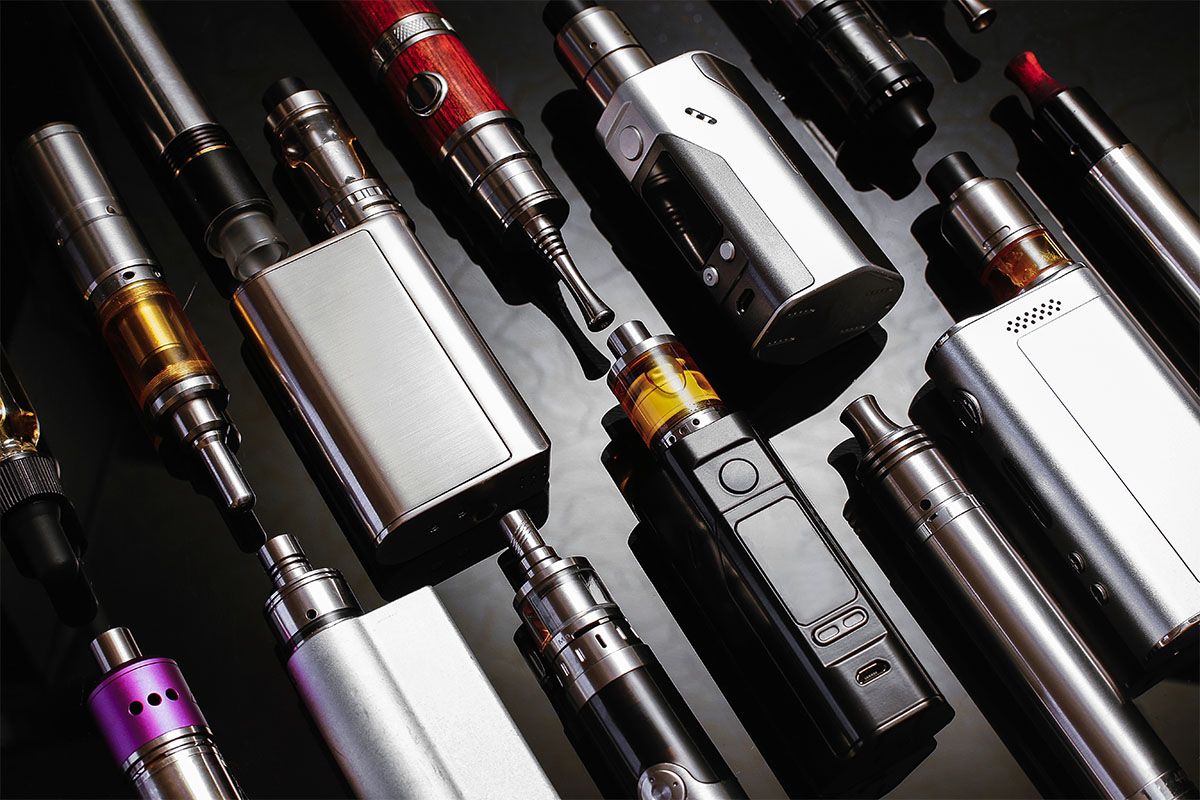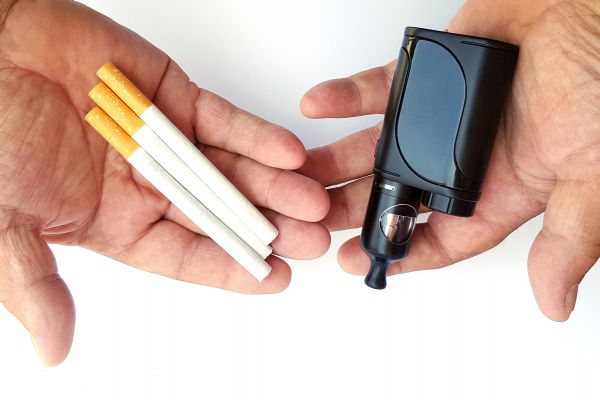Roswell Park research guides FDA policy on flavored products
Mango. Chocolate. Cheesecake. Crème brulée.
Those tempting flavors would be right at home on a dessert menu. That’s why they’re used to boost the appeal of tobacco products, including e-cigarettes, cigarillos, tobacco for water pipes (shisha) and chewing tobacco. Flavored tobacco products (FTPs) are especially popular among young people who vape, or use e-cigarettes, which turn nicotine solution into an aerosol that can be inhaled.
E-cigarettes are relatively new, having hit the market in 2007, making it still too early to determine what health effects they might cause down the road. While they don’t produce tar or carbon monoxide — which makes them potentially less harmful than combustible cigarettes — they’re still dangerous. In the short term, vaping can lead to lung scarring and asthma. The Centers for Disease Control and Prevention (CDC) also reports that when adolescents’ still-developing brains are exposed to nicotine, it can affect learning, memory and attention span. Equally alarming, nicotine is addictive.
Unfortunately, protecting young people from the lure of FTPs can be complicated. Outright bans on the products overlook the fact that flavors are also an incentive for many adult smokers to switch to vaping as a potentially less-harmful alternative to regular cigarettes. Some smokers who make the switch are able to not only quit smoking but eventually quit vaping as well. Andrew Hyland, PhD, Chair of the Department of Health Behavior at Roswell Park Comprehensive Cancer Center, says when the products are used only by adults who already smoke, “they have the potential to improve the health of a population.”
Weighing the harm and benefit of flavored tobacco products
Policies aimed at regulating FTPs need to address both their potential harms and benefits, but that’s a struggle for governments around the world. “We would like to see the greatest positive impact on youth and never-smokers, with little negative impact on adults who use flavored e-cigarettes as a way to quit smoking,” explains Maciej Goniewicz, PhD, PharmD, of Roswell Park’s Department of Health Behavior and the Western New York Center for Research on Flavored Tobacco Products (CRoFT). Regulators also must consider how consumers, manufacturers and marketers will respond to newly implemented policies.
At the national level here in the U.S., policy-makers at the Food and Drug Administration (FDA) rely on scientific evidence to guide them, and much of that evidence comes from Roswell Park researchers. Their work is highlighted in “The Impact of Flavour-Restricting Policies on Non-Cigarette Tobacco Products,” a special issue of the world’s leading tobacco journal, Tobacco Control. Published in November 2022, it comprises 14 articles, including five that feature research contributions from Roswell Park. The special issue was developed by Dr. Goniewicz and Cassandra A. Stanton, PhD, Associate Director for Behavioral Health and Health Policy at the Center for Coordination of Analytics, Science, Enhancement, and Logistics (CASEL) in Tobacco Regulatory Science.
Tobacco Treatment Services at Roswell Park
Whether you are thinking about quitting or ready to quit tobacco all together, we can help.
Learn moreThe articles draw on multidisciplinary research — laboratory studies and population-based studies — to consider a wide range of what-ifs, including:
- How would restrictions on FTPs affect the choices of those who currently use them? How many would continue to buy them through the illegal marketplace?
- How might manufacturers skirt the regulations?
- If manufacturers adapted to new policies by changing production methods, how would that affect the chemistry and toxicity of the products?
New York State’s 2020 ban on flavored vaping products defines the products as those with labels that state or imply that they taste like something other than tobacco. Roswell Park researchers analyzed 555 vaping products collected from daily vapers before and after the ban. Despite the ban, most manufacturers continued to label their products with flavor names. A few removed the flavor names but used color on the bottle or device (strawberry red, for example) to suggest the flavor inside.
What about enforcement? Lab analysis by the Roswell Park group found that flavoring additives in most products remained the same before and after the ban — and nearly all New York State youth who vaped before the ban continued to vape with the restricted flavors after the ban was in place. “They’re vaping less, but they’re having no problem getting these flavors,” notes Dr. Goniewicz. “It looks like the policing that we have in New York State really is not effective.”
Research data should inform new FDA regulations
All together, the studies in this special issue “suggest a need for comprehensive flavour policies covering multiple tobacco products,” wrote Drs. Goniewicz and Stanton in the special issue commentary, noting that banning only one type of FTP would make it easy for people to switch to other FTPs still on the market.
Dr. Goniewicz says that as the FDA considers new regulations for flavored tobacco products, “they need scientific data to figure out how to do it, and that’s what we’re giving them with the information from these studies. We want to help them anticipate and respond to the unintended consequences. We’re saying, ‘Look at this data. We hope it will help you make the best decisions.’”



